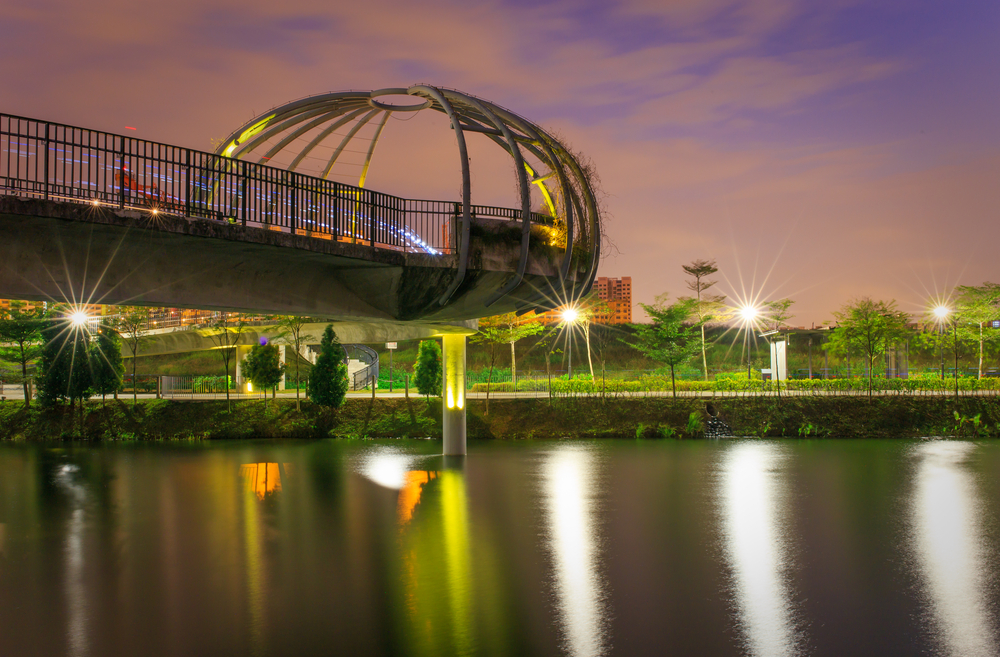The next two BTO launches to look for are at Punggol Point. And before you roll your eyes and say it’s too obscure, too isolated, etc., we suggest you rethink that. Here’s what you need to know:
1. Over 2,000 new homes
This September, the House Development Board (HDB) will be launching two Build-To-Order (BTO) projects. They are Punggol Point Crown, and the second phase of Punggol Point Cove.
The two projects will comprise about 2,724 units, ranging from two-room flexi-flats to five-room flats.
Punggol Point Crown will consist of 1,545-units, while Punggol Point Cove will consist of 1,179 units. Both are located close to Punggol Point Jetty, and My Waterway@Punggol.
The completion date is set at 2024.
2. An Ode to the Past
HDB designed the projects to pay homage to the previous uses of the space it now occupies. For example:
Punggol Point Crown
This district draws inspiration from the old Ponggol Zoo, which once occupied this area. Yes, we know you don’t remember it, because it was (1) set up by William Lawrence Soma Basapa back in the 1920s, and (2) it was private, so it wasn’t seen by most (although Albert Einstein supposedly visited it once).
As an ode to the zoo, the land is divided into five major thematic areas, in representation of the natural habitats of animals that lived there – Canopy level forest, forest floor, grassland, shoreline, and tropical forest. The communal living and play areas, as well as landscaping, will reflect these design themes.
Furthermore, Punggol Point Crown will also have an animal-themed heritage walk. With it, there will be signboards displaying interesting facts about Ponggol Zoo’s history, animals and significant visitors.
(Without the actual animals – no one wants their five-year-old to get chased by an annoyed tapir or something).
Punggol Point Cove

The design and architecture draws inspiration from Punggol’s past as a fishing village, which later became a fishing port. Granted, not much difference between the two in that era (maybe three more sampans a week or something). But the point is, this was a major and busy area on Singapore’s waterways. Maybe you’d even call it the Keppel of its day.
As such, elements of the sea – such as wave-like block structures – have been incorporated into its design. HDB has designed the buildings to stagger down in a way to create a cascading facade, a nod towards its seaside location.
As a reflection of its kampung past, each block will have its own backyard, as well as a series of sky bridges at the 10th storey for residents to interact (part of government efforts to foster a sense of community and connection, to recapture the kampung spirit).
Coastal plant species will be used for the landscaping, as well as wave, bird, and leave designs.
3. Transportation
In the coming years, do expect Punggol to become increasingly more accessible. With plans for a new bus interchange and an upcoming Punggol Coast MRT station, residents will soon be able to get around with greater ease.
These will be operational by 2023.
In the meantime…use Grab (look, it was like this in Jurong once too, before Jurong Gateway. The rise in value is probably worth the temporary inconvenience).
If you drive, you’ll especially love the fact that traffic is at a minimal; even during the 7.30 am and pm rush periods.
4. Recreation
Convenient walkways and parks surround Punggol Point. It is, in fact, one of the most open family spaces on the east side, next to areas along East Coast beach itself.

Residents twill have access to the Punggol Point Park and Jetty and Coney Island through the Punggol Waterway Park. Not to mention, The Punggol Settlement is also within close proximity, offering a range of retail and F&B outlets for the residents there.
5. Punggol Digital District
Punggol Digital District (PDD) is the major draw for the area. Besides being named after a famous rapper*, PDD is the first district to have a single integrated masterplan. It will combine a business park, a university, and community facilities.
It will be an “innovation ecosystem” of the north-east, where academics can come up with crazy internet ideas in universities / research institutes, and then pitch them to actual companies nearby.
This means there’s more opportunity to work near home; and significant demand that’s likely to drive up prices. So while we may joke about “ulu” Punngol now (ha ha, even the pontianaks complain it’s too dark and get lost, etc.), we may all sing a different tune in a decade. Mark our words, we’re seeing the end of “cheap” Punngol.
by Brandon TaySource: 99.co (06 Sep 2019)